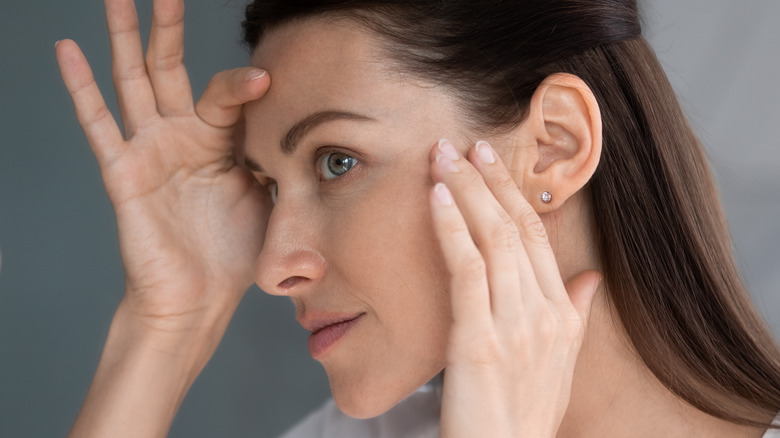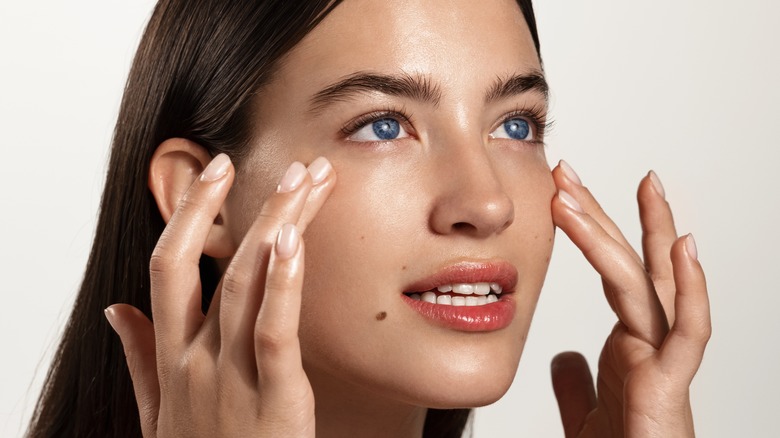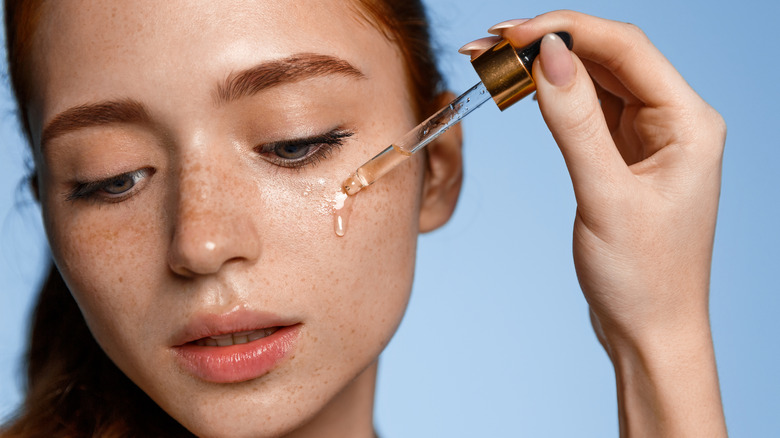How To Tell If You Have Ruddy Skin
A healthy complexion can make a world of difference. Makeup looks better, we feel better, and it can boost your confidence. By 2025, the skincare industry is expected to be worth close to $190 billion. Managing your skin is a process of trial and error and that's why it's helpful to be able to name what you want to work on. You may have heard of people talking about a "ruddy complexion" or looking for remedies for "ruddiness," but what is it, really, and how can you tell if you have it?
It turns out that it's pretty easy. In skincare, the word "ruddy" is used to describe reddened skin. The real trick is determining if your ruddy skin is due to an underlying condition that needs treatment. The American Academy of Dermatology Association says ruddy skin could be a sign of anything from rosacea, eczema, dermatitis, irritation, or an allergic reaction. However, Merriam-Webster defines "ruddy" as "having a healthy reddish color" and in many cases, "ruddy" is used to describe any kind of skin redness, like healthy flushing or momentary sun exposure.
Whatever your particular situation may be, it's good to be able to tell what are signs of skin troubles and what's just healthy redness.
What causes ruddy skin?
Because ruddiness could be a sign of multiple skin issues, it's helpful to hone in on what's causing your ruddy skin. In general, ruddy skin is known to be dull, uneven, and blotchy, like a sunburn. Dr. Corey L. Hartman, board-certified dermatologist and founder of Skin Wellness Dermatology told MBG Lifestyle that it's more common in people with fair skin.
Women's Health Magazine lists 23 causes of skin redness, including shingles, heat rash, or angioedema. The American Academy of Dermatology says to consider if the ruddiness is a reaction to new medication or something you might've come into contact with. Otherwise, it can be anything from psoriasis or eczema to rosacea or rash –- these are some of the most common skin conditions. The AAD reports that 7.5 million Americans have psoriasis and 16 million suffer from rosacea, which is why it suggests seeking diagnosis for these conditions for any inexplicable redness.
According to the AAD, other causes of chronic redness could be a sign that you're getting too much sun, hot flashes, or acne. Loréal Paris' Beauty Magazine says to pay close attention to the area across your nose and cheeks. After gaining a better understanding of your ruddy skin, you can move on to treatment and management.
How to treat ruddy skin
To treat a ruddy complexion would require you to know its cause. Glamour interviewed dermatologists who suggested discontinuing the use of any active topicals, especially exfoliants –- even expensive skincare, or the wrong combination of products, can lead to irritated skin and increased redness. They also noted that rosacea can't be cured, only managed with the help of a professional.
Dermatologists speaking to Today offered a range of tips that can help anyone reduce redness: Exfoliate sparingly, simplify your skincare routine, identify what ingredients or substances cause irritation, and use plenty of sun protection. To cover up the redness with makeup, green color corrector is an effective option. In a YouTube tutorial, Sephora's beauty director suggests using a wet beauty blender to apply a thin sheet of color corrector that will disguise redness rather than muddle it. Redness and ruddiness are extremely common skin issues, so there is nothing short of a wealth of knowledge out there to help you navigate it.


